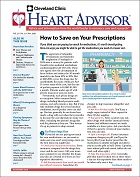Angiotensin receptor blockers (ARBs) are used to treat hypertension (high blood pressure) and heart failure, and also may be used to help prevent the recurrence of atrial fibrillation (a type of heart arrhythmia), and kidney failure in people with hypertension or diabetes. There is some evidence that they also may be associated with a decrease in the occurrence and progression of dementia and a lower risk of nonmelanoma skin cancer. Commonly prescribed ARBs include losartan (Cozaar), telmisartan (Micardis) and valsartan (Diovan) and they also are available in combination form with other antihypertensives and with the diuretic hydrochlorothiazide. ARBs work by targeting one of the bodys natural chemical messengers, angiotensin II. Angiotensin II causes the muscles surrounding the blood vessels to contract, narrowing the vessels in the process. This increases pressure within the blood vessels, resulting in hypertension. ARBs prevent angiotensin II from binding to angiotensin II receptors on blood vessels and other body tissues, thereby limiting its actions and allowing the blood vessels to relax and dilate.
To continue reading this article or issue you must be a paid subscriber.
Sign in






